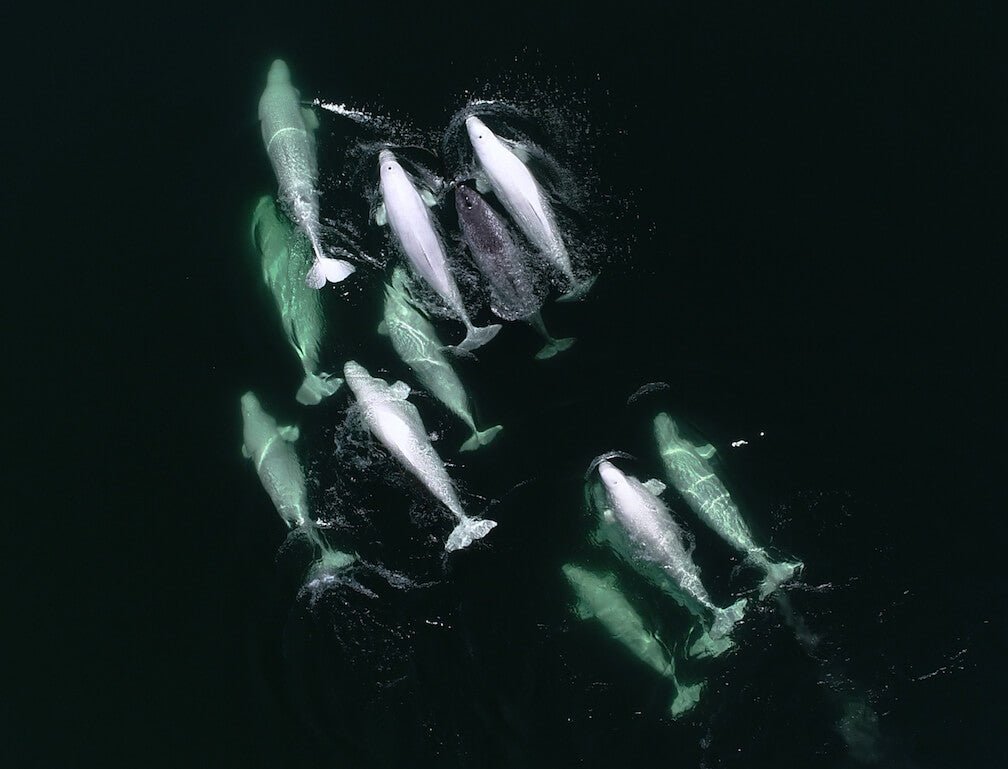
Stray Narwhal Joins Beluga Pod: Future Narluga Baby in St. Lawrence River
|
|
Have you ever heard of a narwhal joining a beluga pod? No, it’s not the start of a fairy tale. It's real life! This odd couple has scientists buzzing with excitement. Could this mean a future "narluga" baby? Let's dive into this fascinating story!
What’s Happening in the St. Lawrence River?
Imagine cruising down the St. Lawrence River, expecting to see the usual sights. Then, you spot something strange — a lone narwhal swimming with a group of belugas. Such a surprising encounter! This isn't common since narwhals usually stick to the icy Arctic waters. But this young male narwhal has decided to make the St. Lawrence River his home. He’s been hanging out with a crowd of beluga whales since 2016!
Why Is This So Unique?
Narwhals and belugas both belong to the cetacean family, specifically the Monodontidae family, yet they rarely cross paths in the wild. Each species has its distinct habitat, behaviors, and social structures. The narwhal, known for its long, spiral tusk, is usually found in the Arctic. Belugas are more flexible in their habitat choices but prefer colder waters too. So, seeing them together? That's like spotting a polar bear in the Sahara!
Drone Footage and Initial Sightings
In 2016, scientists from the Group for Research and Education on Marine Mammals (GREMM) first noticed the narwhal hanging with the beluga pod via drone footage. The images didn't just show him swimming nearby. They exhibited real social interactions — playing, diving, and even nuzzling. This wasn't just a fleeting encounter.
Social Acceptance
The narwhal wasn’t just tagging along. He was accepted! Belugas are known for their social nature. They live in tight-knit groups and communicate with a series of chirps, clicks, and whistles. The fact that this narwhal was welcomed indicated he wasn’t just a visitor; he was family.
What Is a Narluga?
Ever heard of a liger? Then, you’ll get the idea of a narluga! A narluga is a potential hybrid between a narwhal and a beluga. The idea isn't just science fiction. In 2019, a skull from Greenland, dated to 1990, was shown to be a mix of both narwhal and beluga genetics.
Source: https://www.nature.com/articles/s41598-019-44038-0
Historical Hybridization
Hybrids in the wild aren't new. Nearly 20 whale and dolphin hybrids were recorded through a study in 2016 [source](https://academic.oup.com/icesjms/article/73/9/2380/2631966). This crossbreeding proves marine life isn't as straightforward as we think. Hybrids provide essential insights into genetic flexibility and adaptability.
Scientific Feasibility
There's enough scientific groundwork supporting the feasibility of these hybrids. Researcher Robert Michaud has observed the narwhal’s integration into beluga social structures. The narwhal exhibits behavior aligned with the belugas, including what scientists call “pelvic thrusts”—a sign of sexual maturity and interest.
Communication and Social Behavior
One of the significant challenges is communication. Narwhals and belugas have different vocal ranges and social cues developed over millions of years. Despite this, our young narwhal has managed to fit in. But can he talk beluga? Understanding these vocal intricacies is a research focal point.
Physical Characteristics
Okay, let's talk looks. Narwhals are known for their long tusks, while belugas have a more rounded, smooth look. A hybrid could display fascinating blends of these features. Think about it—a whale with a stubby, partial tusk and a mix of skin patterns!
Potential Reproduction Challenges
Unfortunately, not all hybrids are fertile. The historical narluga was speculated to be infertile. If a narluga is born, can it reproduce? This adds a layer of mystery and excitement. Will nature allow this blend of genetics to continue?
Climate Change
We can't ignore the elephant in the room—climate change. The changing climate is forcing animals out of their usual habitats, leading to unusual interspecies interactions. This narwhal may have strayed south due to shifting ice patterns and food sources.
Conservation and Community Involvement
Researchers at GREMM are involving the community. They’re even taking public suggestions for naming the narwhal! [Visit GREMM’s site](https://gremm.org/) to participate. This engagement highlights the importance of community in conservation efforts.
Long-Term Studies
Researchers plan to follow this narwhal into its golden years. Narwhals can live up to 60-80 years, providing ample time to study this unique social experiment. Long-term tracking is key to understanding the social dynamics and potential hybridization consequences.
What If We Do Get a Narluga Baby?
Imagine the birth of a narluga. This event would provide invaluable data on genetic diversity and adaptability. Researchers would monitor growth, social behavior, and health compared to both narwhals and belugas.
This tale isn't just about a lone narwhal and a pod of belugas. It's about the endless possibilities of nature. It forces us to rethink what we know about marine life. Will this unique social bond give rise to a narluga? Only time will tell. But one thing's for sure—nature always has a way of surprising us.
So, what's next? Dive into the wonders of marine biology. Stay updated with ongoing research. Get involved in marine conservation efforts. You can make a difference!
Feeling inspired? Here's how you can get involved:
1. Follow GREMM: Keep up with the latest news and research.
2. Support Marine Conservation: Donate or volunteer with organizations dedicated to protecting marine life.
3. Educate Yourself and Others: Share this story and spark interest in marine biology.
Your next adventure awaits. Who knows, maybe you'll be the one discovering the next incredible phenomenon in the natural world!
- [GREMM](https://gremm.org/)
- [Science Daily: DNA Analysis of Hybrid](https://www.sciencedaily.com/releases/2019/06/190620082916.htm)
- [2016 Whale and Dolphin Hybrid Study](https://academic.oup.com/icesjms/article/73/9/2380/2631966)



